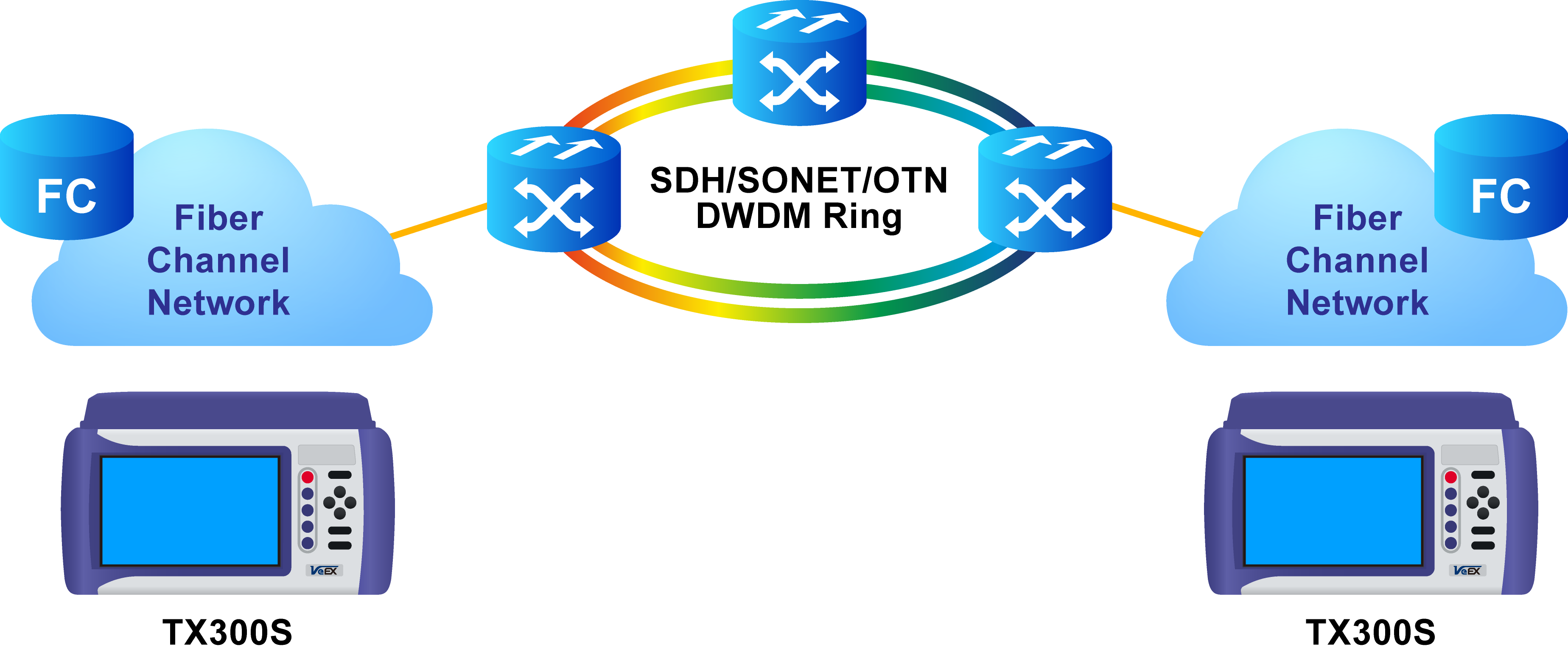Fiber Channel
Fiber Channel Applications
Enterprises worldwide rely on complex IT infrastructures to store and maintain critical data and applications. Storage Area Networks (SANs) have evolved to improve availability, resiliency, performance, modularity and geographical distribution of data storage systems and Fiber Channel is an important technology for linking SANs together.
Fiber Channel over IP
Often, IP-centric networks are used to connect SAN islands over Local Area Networks (LAN), Metropolitan Area Networks (MAN), or Wide Area Networks (WAN). An operational IP backbone (Layer 2 or Layer 3 topology) capable of delivering the required bandwidth for Fiber Channel applications is an absolute prerequisite. The test set equipped with Ethernet and Fiber Channel features is able to verify FCIP connections in a variety of network configurations.

Fiber Channel over SDH/SONET
Service providers have made huge investments in SDH/SONET infrastructure over many decades, hence storage over SONET/SDH networks are considered an essential part of any operator's SAN extension solution. DWDM networks are perfect for transporting high-density, high-bandwidth SAN applications over short distances while SDH/SONET/OTN networks are often used for longer distance applications. The test set is equipped with a strong set of features needed to verify the strategic components and network interconnects.

Key Test Applications
Transport layer - Most customers or providers transporting Fibre Channel are not necessarily trained or concerned with testing the higher protocol layers -- instead the transport groups tasked with transporting this data across a point-to-point or ring type DWDM network are more likely to ask: Did data arrive error free or were any bit errors encountered? Was the CRC corrupted or were any code violations experienced? Testing the transport layer is crucial and normally includes the FC-0 Layer, FC-1 Layer, and parts of the FC-2 Layer where:
-
FC-0 addresses the physical layer: the optical fiber, connectors, and associated optical signal parameters.
-
FC-1 addresses the transmission protocol encoding/decoding, and special characters used for protocol management.
-
FC-2 addresses the signaling protocol layer, which comprises the framing protocol and the flow control process.
The Fibre Channel option addresses all the transport layers by measuring the optical power level and supporting the generation/analysis of bit errors, order sets, frame delimiters, frame transmission, and the generation of primitive sequences. User defined bytes, fixed test patterns or industry-standard PRBS patterns can be selected and inserted into the payload field depending on the test layer. Bit error, CRC error and Code violation insertion are useful features to verify Mux/Demux equipment for error monitoring and detection.
Buffer-to-Buffer Credit Estimation - To avoid loss of frames during transmission, the Fibre Channel protocol uses a buffer-to-buffer flow control mechanism between link partners. During the login process, the remote node informs the local nodes as to the number of receive buffers it has available. For each frame received, the remote port returns a R_RDY frame to indicate that one of the receive buffers is now free - the local port in turn increments its available credit counter by one for each R_RDY acknowledgment frame it receives. However, as the distance between nodes or link partners increases, so does the time it takes for the transmitting node to receive the R_RDY frame because of signal propagation delay. The standard practice for a 1Gbps Fibre Channel link is to allow 1 buffer credit for each 2km of distance.